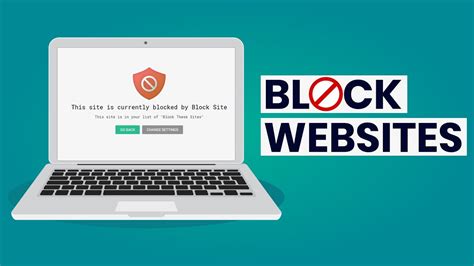How to Block Websites: A Comprehensive Guide for Parents, Employers, and Individuals
The internet offers a wealth of information and entertainment, but it also harbors content that can be harmful, distracting, or simply inappropriate. Knowing how to block websites is crucial for parents protecting their children, employers ensuring productivity, and individuals managing their own online habits. This guide will walk you through several methods to effectively block websites on different devices and platforms.
Why Block Websites?
There are many reasons why you might want to block certain websites. These include:
- Parental Control: Protecting children from inappropriate content like violence, pornography, or hate speech is a top priority for many parents.
- Workplace Productivity: Employers often need to block distracting websites to maintain focus and improve employee efficiency.
- Self-Control: Individuals struggling with internet addiction or specific online temptations can benefit from blocking distracting or harmful sites.
- Security: Blocking malicious websites can help prevent malware infections and phishing attacks.
Methods to Block Websites
The best method for blocking websites depends on your operating system, device, and the level of control you need. Here are some popular options:
1. Using Your Router's Parental Controls
Many modern routers offer built-in parental control features. This is a great option because it blocks access to unwanted websites for all devices connected to your network. This method is highly effective for families or workplaces. You'll need to access your router's admin panel (usually via a web browser) and configure the parental control settings. The specific steps vary depending on your router's manufacturer, so refer to your router's manual.
2. Browser Extensions
Browser extensions provide a convenient way to block websites on a per-browser basis. Many free and paid extensions are available for Chrome, Firefox, Edge, and other browsers. These are easy to install and use, offering customizable blocking options. Popular examples include:
- StayFocusd (Chrome): Allows you to set daily time limits for specific websites.
- Cold Turkey (Multiple Browsers): Offers powerful blocking features with scheduled blocking periods.
- BlockSite (Multiple Browsers): Provides a simple interface for blocking websites and categories.
Remember to research and choose reputable extensions from trusted sources.
3. Operating System-Level Blocking (Windows, macOS)
Both Windows and macOS offer built-in features or allow for third-party applications that provide more robust website blocking capabilities. This method offers a more comprehensive block, applying to all applications on the device.
- Windows: You can use the Windows built-in "Family Safety" features or third-party parental control software.
- macOS: macOS offers limited built-in capabilities, but third-party applications provide more extensive control. Look for applications specifically designed for parental control or internet filtering.
4. DNS Filtering Services
DNS filtering services work by blocking access to specific websites at the DNS level. This means that even if a user attempts to access a blocked website, the request will be denied before it even reaches the website's server. This is a very effective method, especially for managing multiple devices. Some popular DNS filtering services include:
- OpenDNS: Offers free and paid plans with varying levels of filtering.
- CleanBrowsing: Provides several different DNS filters tailored to different needs.
Changing your DNS settings requires technical knowledge and varies across different operating systems and devices.
Choosing the Right Method
The best method for blocking websites depends on your specific needs and technical skills. Consider the following factors:
- Level of control needed: Do you need to block websites on a single device or across an entire network?
- Technical expertise: Are you comfortable configuring router settings or installing browser extensions?
- Budget: Some solutions are free, while others require a subscription.
By understanding the various methods available and choosing the one that best fits your needs, you can effectively manage internet access and create a safer and more productive online experience for yourself and others.
